How to Plant in the Summer (Without Killing Your Plants)

The best transplanting weather is cool and wet, but sometimes there are good reasons to plant during hot and dry weather. In the Pacific Northwest where we regularly experience drought from July well into September, knowing how to help plants cope in these conditions is an essential gardening skill. If you find yourself needing to plant a new addition or move an established plant before the rain finally returns, we’ve got you covered.
Reasons to Transplant in Hot & Dry Conditions
- A plant is showing signs of being in the wrong place. i.e. too little sunlight is stunting growth, poorly draining soil is causing root rot.
- Two or more plants may be crowding each other too closely. This is much more noticeable this time of year when things are fully leafed out, than it is in the fall and spring, which are the ideal times to plant.
- You may just want to add a few new plants! Because let's be honest, who doesn't? And this time of year, it's hard to resist the gorgeous summer blooming perennials on hand at Sky.
- To take advantage of the second cool season veggie planting window that we get in the PNW. Late summer and early fall planting is ideal for a fall or winter vegetable harvest.
- Time sensitive occasions, such as needing to spruce up a house before selling. The housing market doesn't always align well with the needs of your landscape!
Challenges of Transplanting in Hot & Dry Conditions
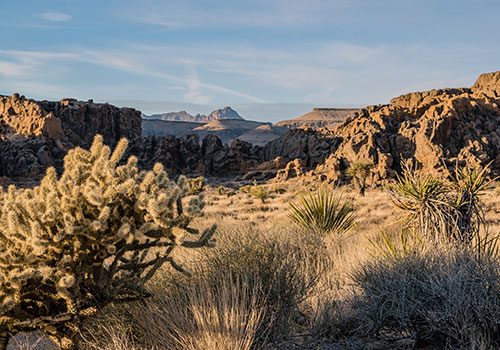
Moving is stressful for anyone, and plants are no exception. Being literally uprooted means that your plants will need to adapt to new soil conditions and establish new connections with soil fungi to access all the nutrients and water they need.
This is much harder when plants are actively growing than when they are dormant, and even harder when they have to deal with the stress of summertime. (This is why it's usually better to wait until fall or spring to plant.)
Some Plants are Easier to Transplant than Others
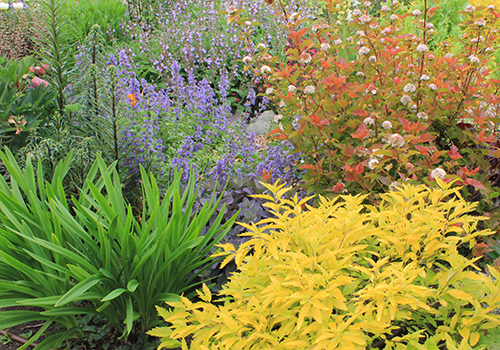
Plants tend to be a lot more adaptable when they are younger. Little kale seedlings will take better to transplanting than a mature perennial that is several years old. Plants with smaller root systems also tend to recover better. For example, it’ll be easier to transplant a shallow-rooted annual this time of year than a large shrub.
Also, the more drought tolerant a plant is, the better chance it will have of making it through on less water as it adjusts. Keep in mind, that doesn't mean your new drought tolerant plantings don't need ANY water at all. They'll still need a little supplemental drink to get established. So, if you’re debating whether or not to transplant, you might check for your plant on our drought tolerant plants list to get a better idea of how much help it will need.
How to Transplant in Hot Weather
If you have decided transplanting now is the right choice for you, then here’s how to set your plants up for success.
Timing Can Be Everything // Look ahead in the weather forecast to see if there’s a slightly cooler or overcast day coming up. This will be easier on the plant! You may also want to plant in the evening so that your plants at least have the cooler nighttime to get started on their adjustment.
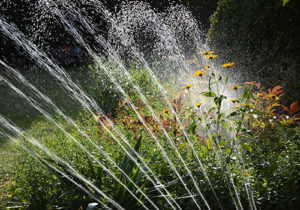 Water, Water Water // Did we say water? Water your plant well the day before you transplant it, so that it will be as hydrated and healthy as possible for the move. When you are ready, start by digging a hole 1.5x wider than the plant. Fill this hole with water, let the water drain fully, then add a little more water. It should be pretty muddy.
Water, Water Water // Did we say water? Water your plant well the day before you transplant it, so that it will be as hydrated and healthy as possible for the move. When you are ready, start by digging a hole 1.5x wider than the plant. Fill this hole with water, let the water drain fully, then add a little more water. It should be pretty muddy.
When you dig up the plant, be careful to get as much of the root ball as you can. This includes very fine roots of larger trees and shrubs which, although harder to see, are more essential for the plant to take up nutrients in its new home than the obvious structural roots. Place the plant in its new home and, can you guess what we're going to say next? Go ahead and water it in.
Add a Layer of Compost as mulch to help retain moisture.
Provide Shade // Especially if the forecast is for very sunny conditions, or a plant is moving from a shady spot into bright, full sunlight. A little respite from the scorching rays of the summer sun can go a long way.
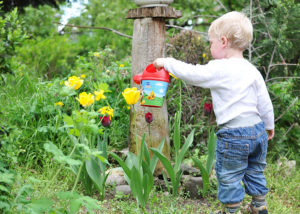 Keep an Eye on It // Afterwards, check on your plant daily, and water if it begins to look at all wilted or stressed. Transplants will need more water than they did in their former home because their root system and fungal connections have been disrupted.
Keep an Eye on It // Afterwards, check on your plant daily, and water if it begins to look at all wilted or stressed. Transplants will need more water than they did in their former home because their root system and fungal connections have been disrupted.
Don’t Be Surprised if it looks pretty sad for a few days. That's pretty common, especially for plantings this time of year. But, if you follow these steps as best you can, it should start to perk up after that. Once you can see new growth and the foliage stays upright and healthy for longer after watering, you’ll know that your plant has settled happily into its new home.
A Few Late-Summer Bloomers to Plant Right Now
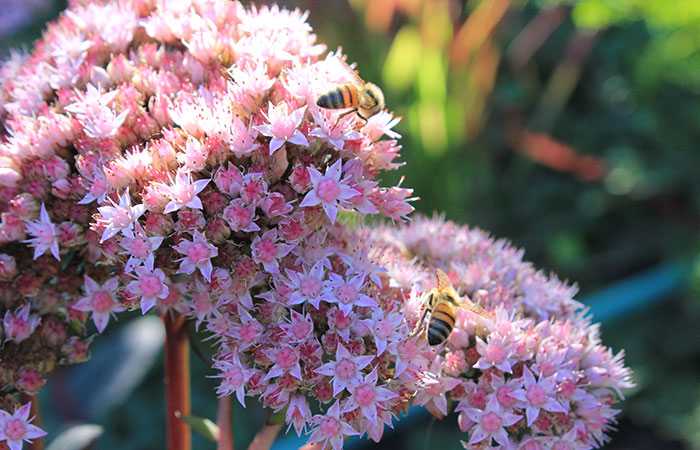
Now that you know how to keep 'em alive, let’s talk about the fun part: exciting, beautiful plants you can now add to your garden, in the middle of summer!
In the late summer and early fall, many spring favorites start to fade. Yet we still have months of good growing conditions left in the season! If your garden or containers need a little boost, there are tons of options available. The nice thing about planting late-summer bloomers now is that you get to choose them when they’re in full bloom. Instant color!
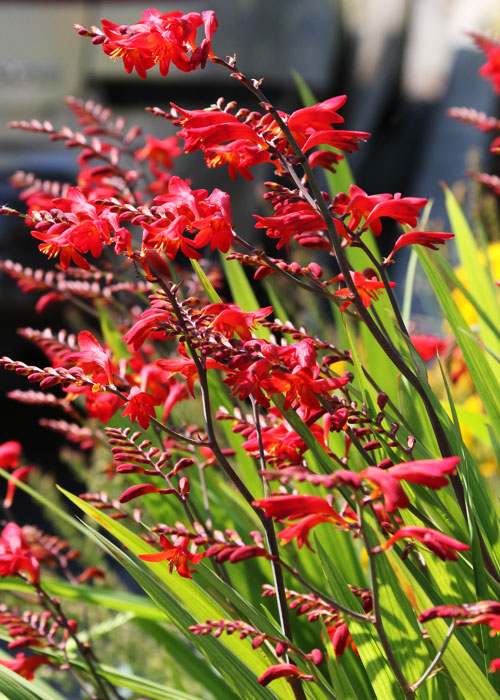
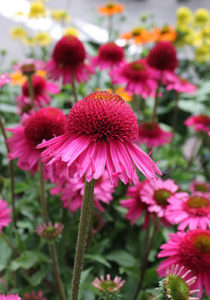 Many perennials are at their best this time of year. Cone flowers (Echinacea) are in full bloom, along with other showy favorites like salvia, ‘Autumn Joy’ sedum, crocosmia and coreopsis. Here at Sky, we show off our most beautiful and bee-friendly seasonal blooms in our Nectar Bar. By the way, every plant you’ll find there is grown without systemic neonicotinoid pesticides, so they are safe for pollinators.
Many perennials are at their best this time of year. Cone flowers (Echinacea) are in full bloom, along with other showy favorites like salvia, ‘Autumn Joy’ sedum, crocosmia and coreopsis. Here at Sky, we show off our most beautiful and bee-friendly seasonal blooms in our Nectar Bar. By the way, every plant you’ll find there is grown without systemic neonicotinoid pesticides, so they are safe for pollinators.
And as summer gives the slightest hint of cooling down into fall, fill out your annual beds or containers with fall bloomers like aster, rudbeckia, mums, pansies, and violas. Heuchera, ferns, vinca, and other evergreen perennials also make great accents for fall containers.
No matter what late summer and early fall planting plans you have in mind, we hope you can plant with a little more confidence now that you know what your plants need to make it through the transition.
